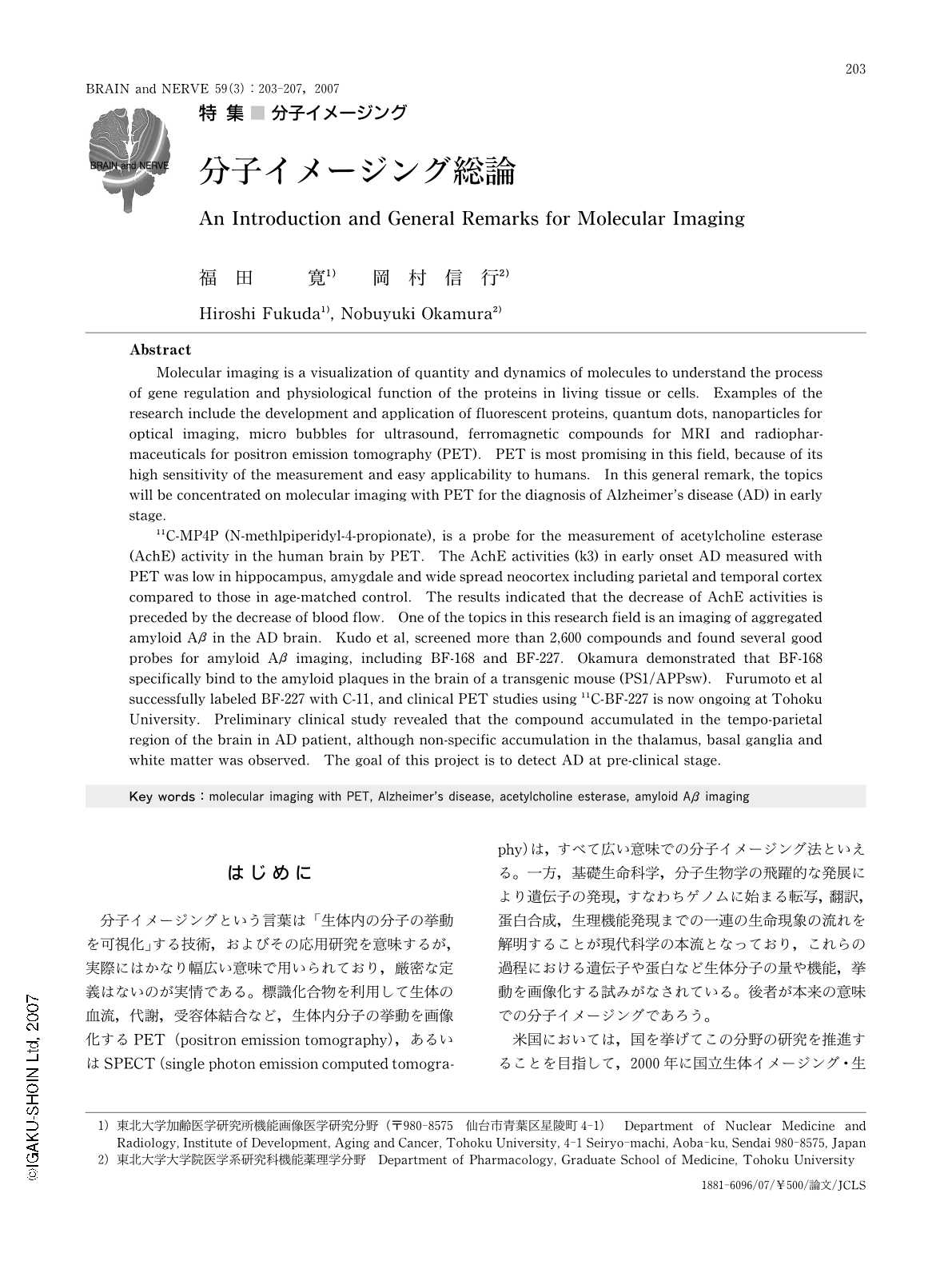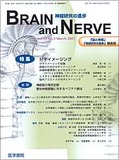Japanese
English
- 有料閲覧
- Abstract 文献概要
- 1ページ目 Look Inside
- 参考文献 Reference
はじめに
分子イメージングという言葉は「生体内の分子の挙動を可視化」する技術,およびその応用研究を意味するが,実際にはかなり幅広い意味で用いられており,厳密な定義はないのが実情である。標識化合物を利用して生体の血流,代謝,受容体結合など,生体内分子の挙動を画像化するPET(positron emission tomography),あるいはSPECT(single photon emission computed tomography)は,すべて広い意味での分子イメージング法といえる。一方,基礎生命科学,分子生物学の飛躍的な発展により遺伝子の発現,すなわちゲノムに始まる転写,翻訳,蛋白合成,生理機能発現までの一連の生命現象の流れを解明することが現代科学の本流となっており,これらの過程における遺伝子や蛋白など生体分子の量や機能,挙動を画像化する試みがなされている。後者が本来の意味での分子イメージングであろう。
米国においては,国を挙げてこの分野の研究を推進することを目指して,2000年に国立生体イメージング・生体工学研究所(NIBIB:National Institute of Biomedical Imaging and Bioengineering)が設立された。この研究所の設立目的には「物理学,化学,数学,計算機科学,工学に関する諸原理を統合して,生物学,医学,行動学および健康について研究をすすめて基礎的学問を発展させ,分子から器官にいたる知識を生み出し,最終的には病気を予防,診断,治療し健康増進を行う」ことが掲げられている。このプロジェクトではさまざまな研究アプローチの中でも,イメージングが特に強調されている。また,米国の国立癌研究所(NCI:National Cancer Institute)では,全米に5カ所,生体分子細胞イメージングセンター(ICMIC:In Vivo Cellular and Molecular Imaging Center)を設立して,この分野の研究を推進している。
一方,わが国でも2005年度に,放射線医学総合研究所および理化学研究所を中心として分子イメージング・プロジェクトがスタートした。放射線医学総合研究所では,PET疾患診断研究拠点担当として,(1)次世代分子イメージング技術の研究開発,(2)精神・神経疾患のイメージング研究,(3)腫瘍イメージング研究を3本柱として研究を推進している。また,東北大学も研究推進および人材育成の点で,放医研と連携してプロジェクトを進めている。理化学研究所では,創薬候補物質探索拠点担当として,PETを用いる分子イメージング用分子プローブの設計・機能評価・動態評価応用を通じて,創薬プロセスの効率化・短縮を目指している。
さらに,このような分子イメージング研究の機運をとらえて2006年5月に「日本分子イメージング学会」が発足した(藤林会長,福井大学)。米国に遅れること約5年であるが,ようやくわが国においても分子イメージング研究の幕が開いたといえる。分子イメージングは,分子の挙動から見た生命現象の解明に大きな貢献が期待されているが,その最終的な目標は疾患の早期診断,あるいは臨床的な症状はないが疾患リスクの高い者の診断など,より予防医学的観点から,感度と特異度の高いプローブを開発することである。
Abstract
Molecular imaging is a visualization of quantity and dynamics of molecules to understand the process of gene regulation and physiological function of the proteins in living tissue or cells. Examples of the research include the development and application of fluorescent proteins, quantum dots, nanoparticles for optical imaging, micro bubbles for ultrasound, ferromagnetic compounds for MRI and radiopharmaceuticals for positron emission tomography(PET). PET is most promising in this field, because of its high sensitivity of the measurement and easy applicability to humans. In this general remark, the topics will be concentrated on molecular imaging with PET for the diagnosis of Alzheimer's disease (AD) in early stage.
11C-MP4P (N-methlpiperidyl-4-propionate), is a probe for the measurement of acetylcholine esterase (AchE) activity in the human brain by PET. The AchE activities (k3) in early onset AD measured with PET was low in hippocampus,amygdale and wide spread neocortex including parietal and temporal cortex compared to those in age-matched control. The results indicated that the decrease of AchE activities is preceded by the decrease of blood flow. One of the topics in this research field is an imaging of aggregated amyloid Aβin the AD brain. Kudo et al, screened more than 2,600 compounds and found several good probes for amyloid Aβ imaging, including BF-168 and BF-227. Okamura demonstrated that BF-168 specifically bind to the amyloid plaques in the brain of a transgenic mouse (PS1/APPsw). Furumoto et al successfully labeled BF-227 with C-11, and clinical PET studies using 11C-BF-227 is now ongoing at Tohoku University. Preliminary clinical study revealed that the compound accumulated in the tempo-parietal region of the brain in AD patient, although non-specific accumulation in the thalamus, basal ganglia and white matter was observed. The goal of this project is to detect AD at pre-clinical stage.

Copyright © 2007, Igaku-Shoin Ltd. All rights reserved.


